It doesn't look that flash: if anything, it resembles a large black crayon. Not what you would imagine a magic wand to look like. Nonetheless, that is precisely what visitors to Manhattan's Cooper-Hewitt, Smithsonian Design Museum are getting when they are issued with a Pen.
The Pen is a go-anywhere, do-anything tool for visitors. Want to browse the museum's collection, or download information on a particular work of art? The Pen can do that. It can also find related objects in the collection, and source information on designers or design materials.
It also lets you draw on the walls. Cooper-Hewitt has one of the world's best collections of wallpaper; use the Pen to call up your favourite from the archives and project it onto the wall. Alternatively, use the Pen to create your own design and project that instead.
Check out the Cleveland Museum of Art's new interactive gallery, Gallery One.
"Eighty-year-olds really enjoy using the Pen, as well as eight-year-olds," says Seb Chan. Part of the team that created Cooper-Hewitt's new digital experiences, Chan is now in a similar role at the Australian Centre for the Moving Image in Melbourne.
He says that the right digital technology can be a game changer for a museum.
"It's not about technology for its own sake, it's about changing how people behave when they come," he says.
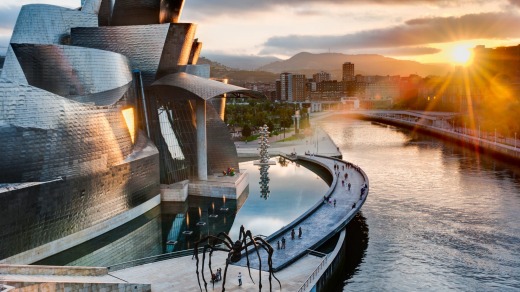
Technology is not the only tool that museums are using to transform themselves. Institutions around the world are breaking rules that were once set in stone.
Remember those hushed, dusty halls you visited as a child? They are well and truly gone. Today's museum is a place where DJs set you dancing, where visitors are encouraged to touch the exhibits, and where you can run loose through the storage areas.
This new approach has been a resounding success. Attendance numbers are soaring at museums across the globe. However, according to one Australian expert, the most powerful tool any museum has remains its exhibits.
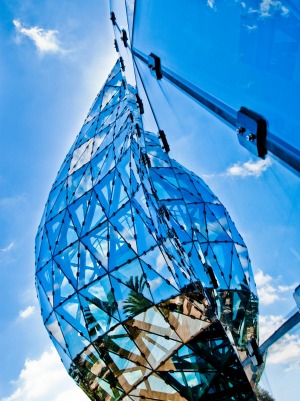
"People are looking for the real and authentic," says Kim McKay, the director and chief executive of the Australian Museum, who has a reputation for encouraging innovation.
"These days, we can see just about everything on a screen, but there is nothing like the real thing."
They may be more entertaining than ever before, but the mission of today's museum remains the same as ever: education. Or, as McKay puts it, "Museums take you to new places."
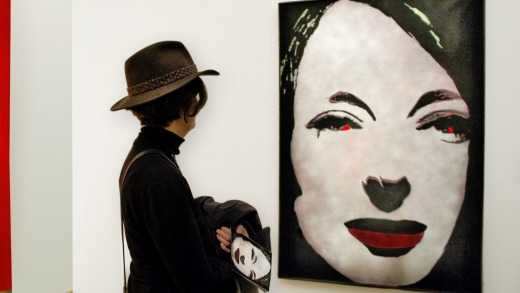
Here are 10 ways that museums around the world are making that journey more interesting.
Tech types are great at concepts, less skilled at naming things. Augmented reality, for instance, it is a clunky term for a cool technology that allows museumgoers to look at exhibits from a whole new angle.
In a pilot project at Athens' Acropolis Museum, visitors were able to simultaneously look at an ancient statue and at a 3D version of the same statue as it would have once appeared, complete with bright paint.
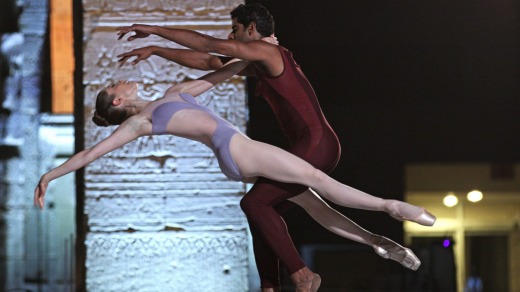
Los Angeles' Getty Museum uses the same technology to explore items from its collection, including a 17th-century display cabinet: users can manipulate a 3D image to open its doors and drawers, and peer inside. Expect to see a lot more similar applications being rolled out.
Don't miss: The Science Museum in London made a splash with an augmented reality app that featured a 3D image of former Top Gear presenter James May introducing some of his favourite exhibits. It has since launched other apps, including Journeys of Invention, which allows users to study and operate augmented reality versions of 80 objects from the collection, including the Apollo 10 command module. See www.sciencemuseum.org.uk.
A museum's collection is like an iceberg: you only ever see the tip of it. Traditionally, most museums have kept the vast majority of their collections in storage.

Today, however, increasing numbers are turning their storage areas into display cabinets. One of the first to do so was Lima's lovely Museo Larco, with its superb collection of pre-Colombian artefacts.
The storage rooms where artefacts are pressed together on floor-to-ceiling shelves are among its most photographed areas. The Brooklyn Museum of Art also puts a rotating selection of artefacts from its store on display, including paintings, sculpture, and design objects.
Don't miss: It is fitting that one of the world's great museums has one of the world's greatest storage areas. Tucked away in a nondescript St Petersburg suburb, the Hermitage Museum's state-of-the-art facility offers visitors a kilometre of exhibits, including exquisite icons, paintings, sculptures and the impressive collection of royal carriages. See www.hermitagemuseum.org.
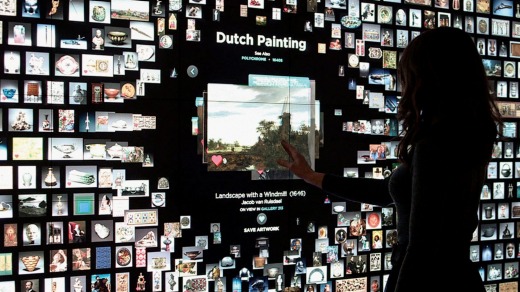
Nine to five is so last century. More and more museums are catering to night owls, offering late-night openings that may even include DJs doing live sets.
In metropolises such as London, virtually every major institution offers at least one late opening. The National Portrait Gallery is open until 9pm on Thursdays and Fridays, the Royal Academy of Arts is open until 10pm on Fridays, and the Tate Modern is open until 10pm on both Fridays and Saturdays.
Don't miss: It started as a Berlin thing, but the Long Night of the Museums, an annual event in which museums across a city stay open late, has now spread to 100 locations across the world. Dates vary from city to city. Heading to Europe? The annual European Night of Museums is a continent-wide event. This year, it is happening on May 21. See www.nuitdesmusees.culture.fr.
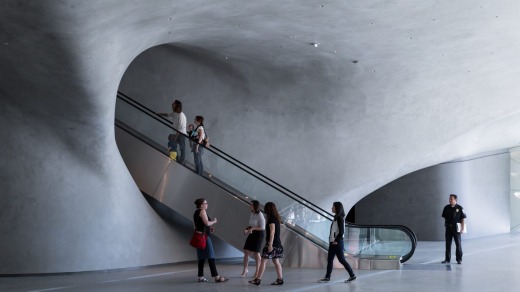
When the Guggenheim Museum first decided to open an outpost in a rundown Spanish industrial town, many thought they were off their rocker. However, the Guggenheim Bilbao proved to be such a roaring success, it was followed by another outpost in Venice and branches in Abu Dhabi and Helsinki are still to come. Satellite institutions can be a smart investment for museums with large collections; the Louvre, for one, is also planning an Abu Dhabi outpost, which will join its existing satellite in Lens, north of Paris.
Don't miss: Paris' Pompidou Centre is known for its striking design, so it comes as no surprise to find that its satellite museums are equally eye-catching. The Centre-Pompidou Metz, north of Paris, is housed in an elegant building by Japanese architect Shigeru Ban. Last year, the museum opened another outpost in the southern Spanish city of Malaga (also home to a satellite branch of the Russian State Museum). Housed in a glass cube, its collection includes works by Picasso, Chagall, Bacon and Kahlo. See www.centrepompidou-metz.fr/en, www.centrepompidou-malaga.eu.
Remember "Look, don't touch"? Today's curators are offering more than a feast for the eyes.
For one recent exhibition, London's National Gallery commissioned composers to create pieces based on a number of key works, while the Tate London's Sensorium exhibition featured sounds, smells and tastes matched to particular paintings.
Touch galleries, once reserved for blind visitors, are increasingly open to all. The British Museum has daily hands-on sessions in many of its galleries, while the Prado in Madrid last year exhibited 3D copies of some of its most famous paintings. Sighted visitors were able to borrow opaque glasses for a complete immersion experience.
Don't miss: London's Victoria and Albert Museum has introduced around 200 "touch objects" into various galleries, ranging from wood samples to a steel mitten gauntlet you can slip on. Among the most popular is a centuries-old Ming vase in a double gourd shape. The two parts of the vase are joined with clay slip; visitors can feel the join with their fingers. See www.vam.ac.uk.
Forget about admiring other people's work: today's cutting-edge museums encourage you to create your own.
The Process Lab at Manhattan's Cooper-Hewitt, Smithsonian Design Museum lets you play product designer, inventing new products by merging features from two or more everyday items.
Taking a different approach, Amsterdam's Rijksmuseum has launched an online Rijkstudio where people can select details from the museum's masterpieces and use them to create their own artworks.
Don't miss: Gallery One at the Cleveland Museum of Art offers plenty of ways for visitors to learn while being creative. One activity examines how artworks are influenced by multiple cultures, and lets visitors build a virtual vase using influences from around the world.
Visitors can also step into the shoes of a master painter, using virtual tools to create their own Jackson Pollock-style painting, or rearrange the elements in a Picasso painting. See www.clevelandart.org.
There's nothing new about using architecture to pull the crowds – Frank Lloyd Wright did it for the New York Guggenheim half a century ago – but since Frank Gehry's swirling design for the Guggenheim Bilbao captured the public's imagination, the practice has become increasingly common.
"For a new institution or an old one wanting to completely transform itself, a 'name' architect will definitely generate interest," says Kim McKay.
The trend has caught on as far afield as Antwerp (the eye-catching Museum aan de Stroom, designed by Neutelings Riedijk Architects), Florida (Ron Arad's ribbon-like Salvador Dali Museum in St Petersburg, Florida) and Mongolia, where Beijing's MAD architects have designed a startling organic museum amid the desert sands in Ordos.
Don't miss: Renderings of the Pingtan Art Museum, due to open later this year in China, have already created excitement among the design crowd. Asia's largest private museum, also designed by MAD, will be an undulating concrete island with cave-like interiors. It is touted as being the cultural centrepiece of Pingtan, a city that, incidentally, hasn't been built yet. See www.i-mad.com.
Not so long ago, museums measured their success by how long you spent within their walls. These days, what counts is how far beyond those walls they can extend their reach.
That can mean taking the collection out into new areas, like LA's Museum of Contemporary Art, which has started exhibiting some of its collection in working class neighbourhoods. Alternatively, it can mean extending the exhibition experience out into the real world. As part of an exhibition on poet Emma Lazarus, for instance, New York's Museum of Jewish Heritage developed an app featuring a walking tour taking in key sites in Lazarus' life.
Don't miss: Hobart's MONA – the Museum of Old and New Art – has won acclaim for its innovative O system, which operates on iPhones. In addition to accessing a wide range of information about the artworks on display, and interviews with their creators, visitors can save the tour and email it to themselves to access at home. See www.mona.net.au.
Why should concert halls have all the fun? Many museums have long included cultural performance on their activity schedule; from flute recitals to flamenco, these concerts and performances are becoming increasingly important. So much so, in fact, that the new building for New York's Whitney Museum, which opened last year, includes a specially designed theatre complete with a sprung dance floor.
Further uptown, the expansion plans for MOMA will also include at least one major performance space.
Don't miss: Still in New York, the Metropolitan Museum has one of the oldest and best cultural programs around, thanks to a general manager of concerts and lectures who programs more than 50 performances a year. These include everything from dance and opera to contemporary music and theatre, and are performed not just in the Met's dedicated concert hall, but also in memorable venues such as the ancient Egyptian Temple of Dendur. See www.metmuseum.org.
There's something inherently exciting about the idea of being locked in a museum after hours, as Ben Stiller knows.
Increasingly, institutions around the world are giving children the chance to experience the thrill for themselves. Washington DC's International Spy Museum offers Operation Secret Slumber for children aged between nine and 13, in which kids get to grill a real-life spy and divide into teams to carry out missions.
London's Science Museum offers science nights for children between 7 and 11, featuring workshops, science shows and an IMAX film.
Don't miss: If it works for kids, why not for grown-ups? New York's Natural History Museum, which has long hosted kids' sleepovers among the dinosaurs, now offers adults-only events as well. Appropriately, they are slightly more sophisticated: think dinner, drinks and midnight movie screenings. See www.amnh.org.
The Palestinian Museum is set to open in Birzeit, north of Ramallah, with an exhibition that tells the stories of Palestinians through personal objects, such as combs and beds. See www.palmuseum.org/language/english
Singapore turned 50 last year, and one of its presents to itself was a new flagship museum. The new National Museum of Singapore showcases the world's largest collection of southeast Asian art. See www.nationalmuseum.sg.
Displays at Washington DC's new National Museum of African American History and Culture will include everything from a segregated rail car to Chuck Berry's Cadillac convertible and items from the #BlackLivesMatter movement. See www.nmaahc.si.edu.
Host cities often celebrated the Olympics with a new museum or two, and Rio de Janeiro is no exception. The freshly unveiled Museum of Tomorrow, dedicated to science and technology, is housed in a spectacular building designed by Santiago Calatrava. See www.museudoamanha.org.br
Downtown LA got an additional dose of culture late last year with the opening of the Broad Museum. Nearly 2000 works from the private collection of Eli and Edythe Broad are featured, including works by Warhol, Lichtenstein and Basquiat. See www.thebroad.org.
Classics never go out of style. Here are some of our once and future favourites.
BRITISH MUSEUM, LONDON
A storehouse of treasures from around the world. Prehistoric bones, Egyptian antiquities, and marble sculptures from the Parthenon are among the highlights. See www.britishmuseum.org.
THE LOUVRE, PARIS
Once a medieval fortress, the Louvre is now home to some of the world's most famous masterpieces, from the Venus de Milo to the Mona Lisa. See www.louvre.fr/en.
THE VATICAN MUSEUMS, ROME
The crowds cluster inside the Sistine Chapel, but this astonishing institution has no end of treasures, from classical sculpture to the magnificent Raphael Rooms. mv.vatican.va
PERGAMONMUSEUM, BERLIN
The most popular of all the museums on Berlin's Museum Island, this astonishing collection of ancient artefacts includes the Pergamon Altar from Greece and the Ishtar Gate from Babylon. See www.smb.museum/en
SMITHSONIAN INSTITUTION, WASHINGTON DC
There's something to suit every taste in this extraordinary collection of museums. Don't miss the American History Museum, for the original Star Spangled Banner and Dorothy's ruby shoes. See www.si.edu.
Five museums closer to home.
NATIONAL MUSEUM OF AUSTRALIA, CANBERRA
A collection that reflects every aspect of Australian culture, from Play School props to Michael and Lindy Chamberlain's Holden Torana. See www.nma.gov.au.
WESTERN AUSTRALIAN MUSEUM – SHIPWRECK GALLERIES, FREMANTLE
A fascinating collection of artefacts rescued from shipwrecks, as well as the remains of Australia's most famous shipwreck, the Batavia. See www.museum.wa.gov.au/museums/shipwrecks.
AUSTRALIAN MUSEUM, SYDNEY
At Australia's oldest museum, crowd-pleasers include the First Australians gallery, the skeletons in the Long Gallery, and the new Wild Planet exhibit. See www.australianmuseum.net.au.
MELBOURNE MUSEUM
Displayed across eight galleries are everything from a living rainforest to the famous racehorse, Phar Lap. See www.museumvictoria.com.au/melbournemuseum.
QUESTACON, CANBERRA
This innovative science museum lets you create a gale that blows the roof off a house, and explore the physics behind fun parks. See www.questacon.edu.au